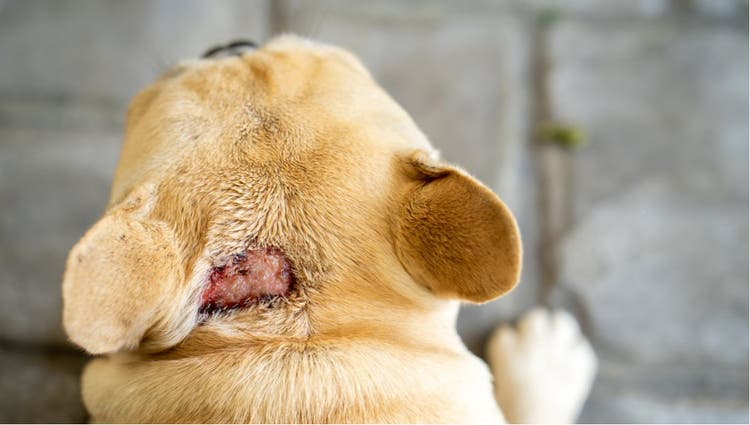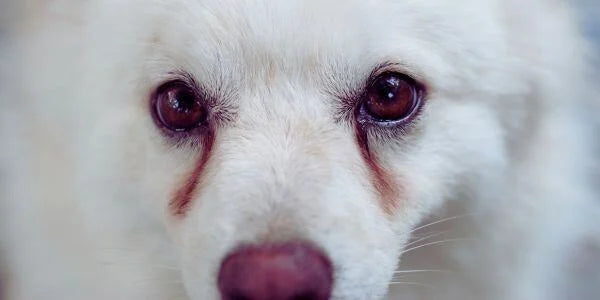Dog Hot Spots: Natural Remedies, Causes & Prevention
If you’ve ever noticed a red, moist, irritated patch of skin suddenly appear on your dog — seemingly overnight — you’re likely dealing with a hot spot. These inflamed skin lesions can spread fast, cause extreme discomfort, and lead to compulsive scratching or licking. In this post, we’ll break down what hot spots are, what causes them, and the most effective natural remedies and prevention strategies.
What Is a Hot Spot on a Dog?
A hot spot (also known as acute moist dermatitis) is a localised area of inflamed, infected skin. It usually appears as a red, weeping sore, often surrounded by hair loss or crusty edges. Dogs will often lick, chew, or scratch the area excessively, which makes it worse and delays healing.
Common locations include the head, neck, hips, and chest — but they can appear anywhere the dog can reach.
What Causes Hot Spots in Dogs?
Hot spots usually start with a trigger — something that causes your dog to itch or scratch excessively. That irritation breaks the skin, allowing bacteria to enter and create a fast-spreading infection.
Common triggers include:
- Fleas or insect bites
- Allergic reactions (food or environmental)
- Excess moisture (swimming, rain, or not drying properly)
- Poor grooming or matted hair
- Anxiety or boredom-related licking/chewing
Underlying immune or skin sensitivities can also play a role, particularly in dogs prone to allergies or yeast issues.
→ Read: Why Is My Dog So Itchy?
Natural Remedies for Dog Hot Spots
If the hot spot is small and not severely infected, there are natural steps you can take to help your dog heal at home:
- 1. Trim the Hair Around the Area: This helps air reach the wound and prevents hair from trapping moisture or bacteria. Use blunt-edged scissors or ask a groomer or vet if unsure.
- 2. Clean the Spot Gently: Use a mild, natural antiseptic solution like diluted povidone-iodine or witch hazel. Avoid hydrogen peroxide or alcohol, as they can irritate and delay healing.
- 3. Apply a Natural Topical Soother: Aloe vera gel, calendula, or cooled chamomile tea can soothe inflammation. Avoid anything with added scents or essential oils unless confirmed safe for dogs.
- 4. Prevent Licking: Use a cone or protective collar to stop your dog from making it worse. If anxiety is the cause, calming chews or environmental enrichment can help reduce the urge to lick.
- 5. Address Underlying Causes: If allergies or poor gut health are the cause, supplements targeting the immune and digestive systems can be a long-term solution.
→ Try: Pupps Itch Relief Chews
When to See the Vet
Hot spots can worsen quickly, so monitor closely. Contact your vet if you notice:
- Spreading redness or swelling
- Thick, yellow discharge or foul smell
- Signs of extreme pain or lethargy
- No improvement after 2–3 days of home treatment
Severe cases may need prescription antibiotics or a medicated topical spray.
How to Prevent Hot Spots Naturally
Consistent care and lifestyle habits can help reduce the likelihood of hot spots:
- Brush regularly to prevent matting and check for fleas
- Dry thoroughly after swimming or baths
- Feed a diet rich in skin-supporting nutrients like omega-3s and zinc
- Use calming supplements if licking is stress-related
- Support gut health to minimise allergic flare-ups
Final Thoughts
Hot spots may look alarming, but they’re manageable with prompt, natural care. By understanding the cause and acting quickly, you can help your dog heal faster and prevent recurrence. As always, if in doubt — check with your vet.



Leave a comment
This site is protected by hCaptcha and the hCaptcha Privacy Policy and Terms of Service apply.